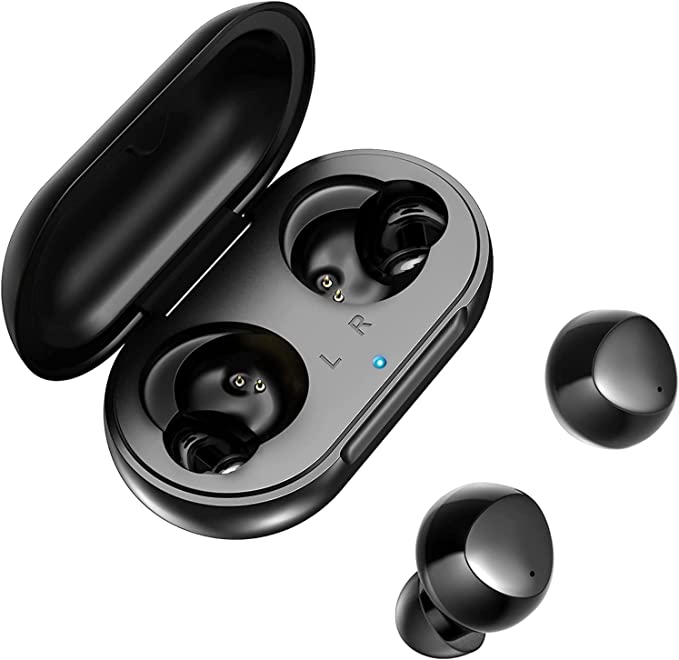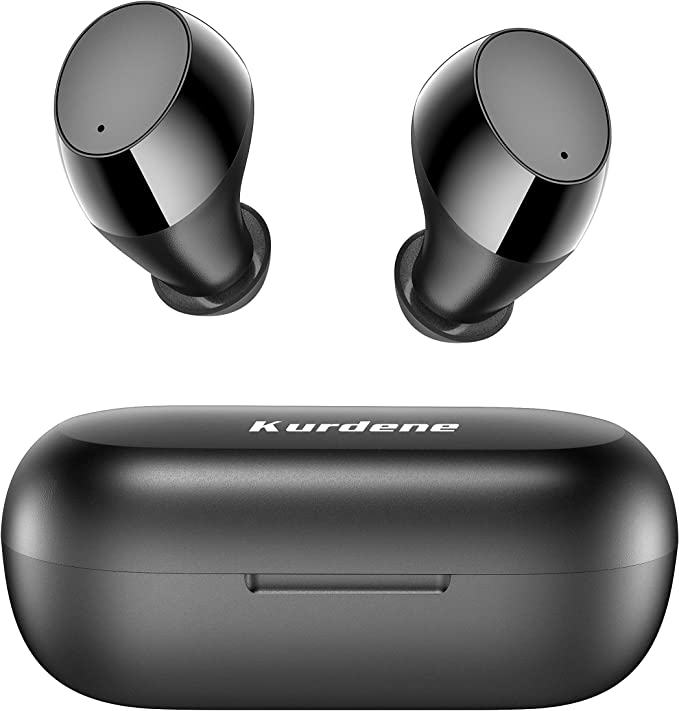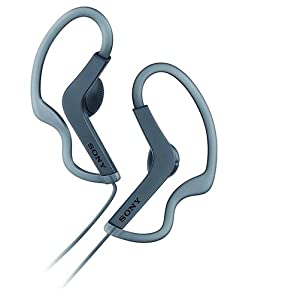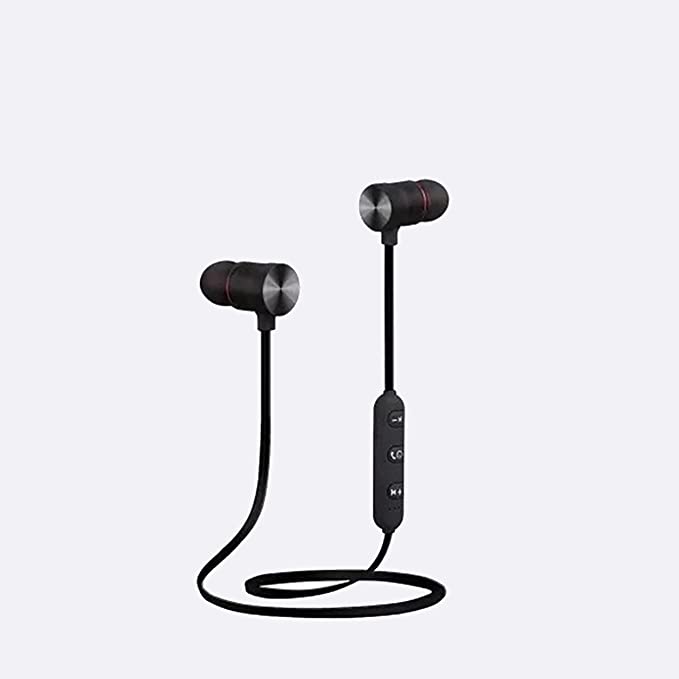Rulefiss I27-1 Wireless Earbuds: Top-Notch Audio Quality and Ultra-Long Battery Life Make It the Go-To Sports Earbuds
Update on Sept. 13, 2025, 7:06 a.m.
Let’s dissect a pair of everyday earbuds to uncover the marvels of physics, engineering, and material science that bring music to our lives—from the magic of Bluetooth to the reality of waterproofing.
We live in an age of casual magic. We pop two tiny nodules into our ears, tap one, and a universe of sound floods our senses. Music, podcasts, conversations—all flow seamlessly from a device in our pocket, untethered by physical wires. This experience has become so commonplace, so utterly simple, that we rarely pause to consider the monumental science and engineering elegantly concealed within these plastic shells.
This illusion of simplicity is, perhaps, technology’s greatest achievement. But today, let’s break the spell. Let’s become explorers. Using a typical, modern pair of wireless earbuds—like the Rulefiss I27-1, which embodies many of today’s standard features—as our specimen, we will embark on a journey inward. We’re not here to review a product, but to use it as a key to unlock the fundamental principles that power our wireless world.

The Unbreakable Thread: Decoding Wireless Stability
Remember the early days of Bluetooth? The stuttering audio, the frustrating pairing rituals, the constant dropouts if you dared to place your phone in the “wrong” pocket. Today, that experience is largely a ghost of the past. Why? The answer lies in a clever dance of physics and protocol happening every millisecond.
Your earbuds operate in the 2.4 GHz ISM (Industrial, Scientific, and Medical) band. Think of this as a public, multi-lane highway in the sky. It’s incredibly crowded, with your home Wi-Fi, your microwave oven, your neighbor’s baby monitor, and countless other devices all shouting in the same frequency range. For your music to come through clearly, your earbuds need a way to have a private conversation in the middle of this chaotic party.
This is where a technique called Frequency-Hopping Spread Spectrum (FHSS) comes in. Instead of staying on one “lane” of the highway, Bluetooth devices that use this technique are constantly, rapidly, and pseudo-randomly hopping between dozens of different channels—up to 1600 times per second. It’s the digital equivalent of being in a loud room and quickly moving with your conversation partner from one quiet corner to another to avoid being drowned out.
Modern standards like Bluetooth 5.3 refine this dance into an art form. It’s not just a number; it’s a smarter traffic controller. It introduces improved channel classification, allowing the earbuds and your phone to identify and blacklist “bad” or crowded channels, making the hopping path even more efficient. This is the invisible force that grants you a rock-solid connection, whether you’re in a busy gym or a quiet office. It’s the science that bridges the physical gap, creating an unbreakable thread for your audio.

The Heartbeat of Sound: The Physics of a Tiny Speaker
Once the digital signal has successfully traversed the airwaves, it arrives at the earbud. Now, it must be transformed from abstract ones and zeros back into the rich, analog waves of music. This act of alchemy is performed by a component called a driver, the true heart of any earbud.
Most earbuds, including our example with its 11mm drivers, use what’s known as a dynamic driver. The principle behind it is a beautiful piece of 19th-century physics. It consists of three key parts: a stationary magnet, a lightweight coil of wire (the “voice coil”), and a flexible cone or diaphragm attached to the coil. When the electrical audio signal passes through the voice coil, it becomes a tiny electromagnet. This electromagnet is rapidly pushed and pulled by the permanent magnet, causing the attached diaphragm to vibrate. These vibrations push and pull the air, creating pressure waves—the very essence of sound.
So, why does the size of the driver (like 11mm) matter? Physics provides a clear answer. To produce deep, powerful bass notes, you need to move a significant amount of air. A larger diaphragm has more surface area, allowing it to push a greater volume of air with each movement, just as a large woofer does in a home stereo system. It’s not magic; it’s mechanics. The engineer’s art lies in tuning this system—balancing the diaphragm’s stiffness, the magnet’s strength, and the enclosure’s acoustics—to shape what we call the “sound signature.”

The Fortress of Durability: Surviving the Real World
Our personal audio devices live a tough life. They’re subjected to sweat, rain, and tumbles. To survive, they need a suit of armor, both visible and invisible. This is where material science and international standards come into play.
You’ve likely seen a rating like IPX7 on many electronics. This isn’t marketing jargon; it’s a precise standard from the International Electrotechnical Commission (IEC). Let’s decode it. The “IP” stands for Ingress Protection. The first number (represented here by “X”) rates protection against solid particles like dust. The second number, the “7”, rates protection against liquids. A “7” means the device can withstand being submerged in up to 1 meter of fresh water for 30 minutes. This is achieved through meticulous engineering of seals, gaskets, and water-tight casings.
But often, there’s a second, invisible layer of defense: a hydrophobic nano-coating. This is a microscopic layer of polymer applied to the internal circuit boards. This coating works by creating a surface with extremely high surface tension, causing water to bead up and roll off rather than spreading and shorting out the delicate electronics. It’s like giving the circuitry its own personal, invisible raincoat.
This brings us to a crucial piece of physics that answers a common question: Why can’t I swim with my IPX7 waterproof earbuds? While the earbuds themselves would likely survive the water, your music wouldn’t. Bluetooth’s 2.4 GHz radio waves are very effectively absorbed by water molecules. Water is to Bluetooth what lead is to X-rays. The moment the earbuds are submerged, the connection to your phone is severed. Your fortress is waterproof, but the communication line is not.

The Art of Compromise: Engineering in a Small Package
Every feature in a consumer electronic device is the result of a decision, a trade-off between performance, cost, and power consumption. The design of an earbud is a masterclass in this art of compromise.
Consider the term “Noise Cancelling.” There are two vastly different technologies hiding behind this phrase. Active Noise Cancellation (ANC) is an electronic marvel. It uses microphones to listen to the outside world and then generates an inverse sound wave—an “anti-noise”—to cancel out ambient sounds before they reach your ear. It’s brilliant, but it requires dedicated processors, extra microphones, and consumes significant battery power.
On the other hand, there is Passive Noise Isolation. This is a physical barrier. By choosing the right size of silicone ear tip to create a snug seal in your ear canal, and using an over-ear hook to keep it securely in place, the earbud physically blocks a great deal of external noise, just like a high-quality earplug. For a product at an accessible price point, forgoing the complexity and cost of ANC in favor of perfecting passive isolation is an intelligent engineering choice. It’s a trade-off that prioritizes core functionality and battery life.
That impressive 42-hour battery life isn’t just about cramming a big battery in the case. It’s a symphony of efficiency. It relies on the low-energy protocols of modern Bluetooth, power-sipping chips, and the simple fact that the earbuds themselves have small batteries, drawing life from the larger 500mAh “power bank” in the case between uses.

The Symphony of Science
The next time you place your earbuds in your ears and the world fades away to be replaced by your favorite song, take a moment. Appreciate the silent, invisible symphony you’ve just initiated. It’s a performance conducted by the laws of physics, played on instruments of brilliant engineering.
You aren’t just listening to music. You’re experiencing the culmination of decades of research in radio transmission, acoustics, material science, and battery chemistry. From the intelligent frequency hopping that carves a clear path through a crowded sky, to the electromagnetic dance creating sound waves against your eardrum, to the invisible armor protecting it all from the elements—it is a testament to human ingenuity. The greatest magic is not that it works, but that it has been made so reliable, so affordable, and so simple, that we have the luxury of taking it for granted.



























































